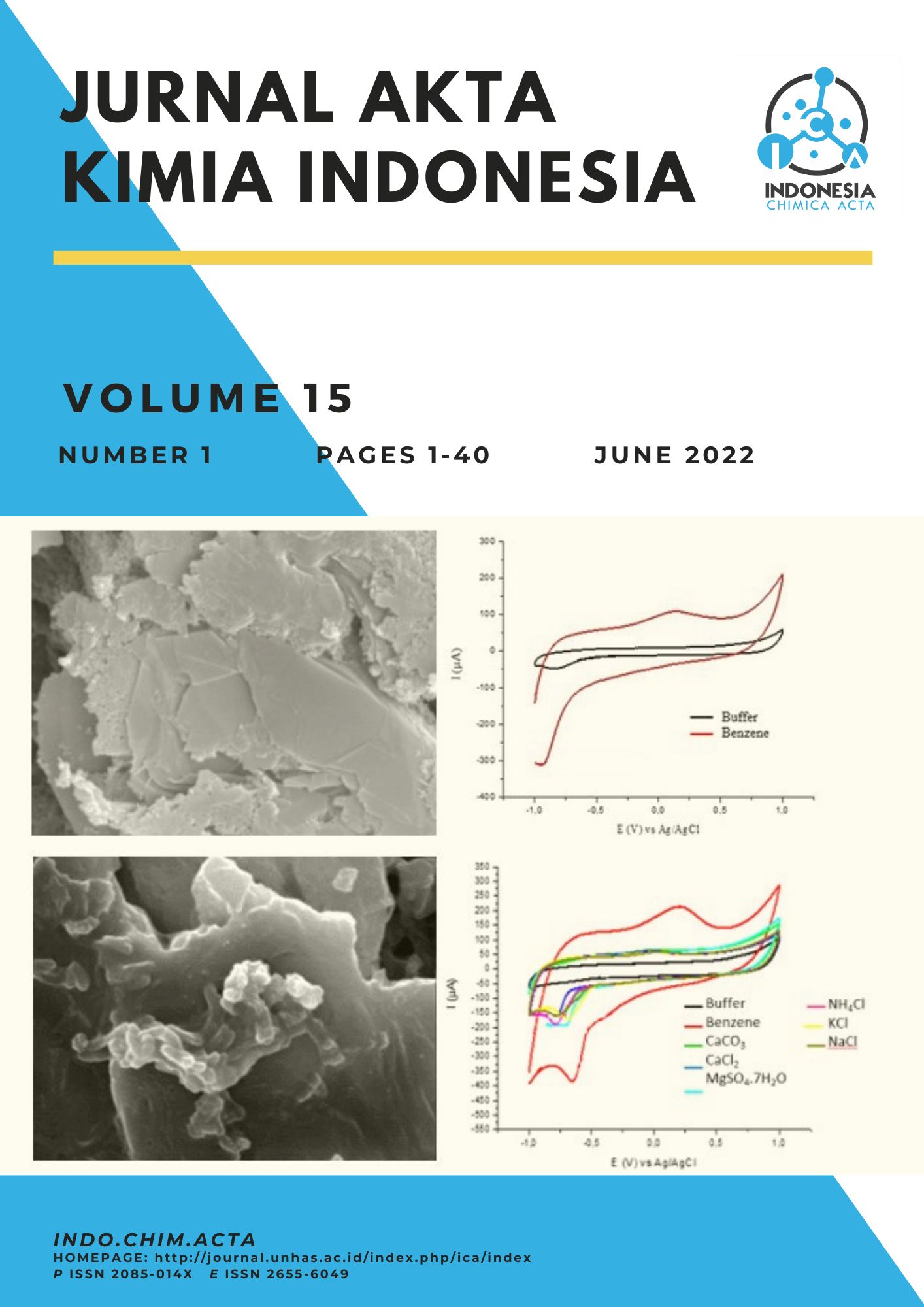Main Article Content
Abstract
Benzene is known as one of the hazardous compounds potentially interfering the health and polluting the environment. Generally, detecting benzene still requires a long analysis time and expensive costs. Therefore, this study aimed to evaluate the analytical performance of a biosensor with microbes as the biodetection element. Pseudomonas sp. biofilms which produce benzene dioxygenase enzyme and then immobilized on a Screen-Printed Carbon Electrode (SPCE). The results of the optimization of the biosensor obtained a benzene concentration of 3 mM, a bacterial density of 1.4x1011 cells/mL and suspension pH of 7.5. The optimization results are used to measure the analytical performance of the biosensor. The value of analytical performance produced on linearity is in the measurement range of 0.1 - 3 mM, the equation y = 7.4118x + 80.048 with R2 = 0.9744. The detection limit and quantity limit are 0.5630 mM and 1.8767 mM respectively, with a sensitivity of 7.4188 μA/mM. The precision obtained shows that the SPCE biofilm method has moderate accuracy with a %SBR value below 5%. The selectivity of this method still needs to increase, but the stability of the benzene biosensor increases up to 35 days with an activity of 100.36%. This indicates the immobilization of Pseudomonas sp. had potency as an alternative method for detecting benzene and it can be developed for a prototype.
Article Details

This work is licensed under a Creative Commons Attribution-ShareAlike 4.0 International License.
How to Cite
Alif, A., Iswantini, D., Purwaningsih, H. ., Nurhidayat, N. ., Aulia Ghozali, A. ., & Febryanti, A. . (2022). Optimization and Validation of Electrochemical Biosensor Based on Pseudomonas sp. Biofilm Immobilized on Screen-Printed Carbon Electrode in Detecting Benzene. Jurnal Akta Kimia Indonesia (Indonesia Chimica Acta), 15(1), 21-28. https://doi.org/10.20956/ica.v15i1.19008
